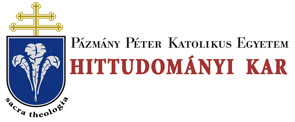Folia Canonica 7. (2004)
STUDIES - Szabolcs Anzelm Szuromi: Patristic Texts in the Collectio Canonum Anselmi Lucensis (Recension 'a') and their Correspondence with the Decretum Gratiani
76 SZABOLCS ANZELM SZUROMI Concerning this latter theme it is evident that Cyprian’s works give a basis for that, because he could have answered clearly the question of the lapsed Christians after periods of the persecution in Carthage. Based on canons from Cyprian (cf. Book 6 c. 57) the essential character of the duties of the bishops can be crystalized, who are successors of the apostles, therefore their mission is an important element in the unity of the Church.26 The most specific duty of the bishop’s authority is to guard the unity of the Church. The bishops are that necessary basis for establishing the activity of the Church.27 Therefore, the Pope’s office is remarkable in the ecclesiastical hierarchy who is the symbol and represention of the unity in St. Cyprian’s works.28 II. Correspondences of the Decretum Gratiani with patristic MATERIAL OF ANSELM’S COLLECTION The Collection of Anselm of Lucca is one of the most important sources of Gratian’s Decretum which was compiled around 1140. The textual critical analysis, which was done recently on the text of the recenzions ofAnselm ’s Collection, has supported this close connection. Comparing the roman-law texts of Anselm ’s Collection and the Decretum Gratiani, it seemed clearly that the majority of the secular texts were cited directly from the legal collections by Gratian not from the Collectio Canonum Anselmi.29 But regarding the patristic texts our conclusion is contrary to the source of the roman law material. Anselm ’s Collection has its own significant patristic material, which possible made a great influence on the contents of the Decretum Gratiani. The majority of the patristic material of Anselm ’s Collection (93 [95] canons of 156 [158] canons) are found in the Decretum Gratiani. The comparing of the 26 Cf. “Cyprian thus affirms the divine institution of the episcopate more clearly than any of his predecessors by making a distinction between the apostolate, which comes from God and is carried out by the bishops alone, and the ministers, who are a human institution”, J. DaniÉ- LOU, The Origins of Latin Christianity (A History of Early Christian Doctrine before the Council ofNicea, vol. Ill), London-Philadelphia 1977, 433. 27 Cf. Kelly, Early Christian Doctrines, New YorkN.Y.21960, 203—205. 28 Kelly, Early Christian Doctrines, 205-206. Sz.A., Szuromi, Roman Law Texts in the ’A’, 'B 'C' Recensions ofthe Collectio Canonum Anselmi Lucensis, and in BA V Vat. Lat. 1361 {A comparative overview ont he influence of the roman law on different canon law collections up to the Decretum Gratiani), in La Cultura giuridico-canonica medioevale: premesseper un dialogo ecumenico, Milano 2003,437—467; cf. J.M. VlEJO-XlMÉNEZ, La recepción delderecho romano en el derecho canónico, in Ius Ecclesiae 14 (2002) 375-414, especially 376. J.M. Viejo-XimÉnez, El Derecho Romano “nue- vo ” en el Decreto de Graciano, in Zeitschrift der Savigny-Stiftungfür Rechtsgeschichte, Ka- nonistische Abteilung 88 (2002) 1—19.
